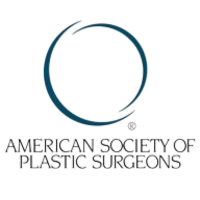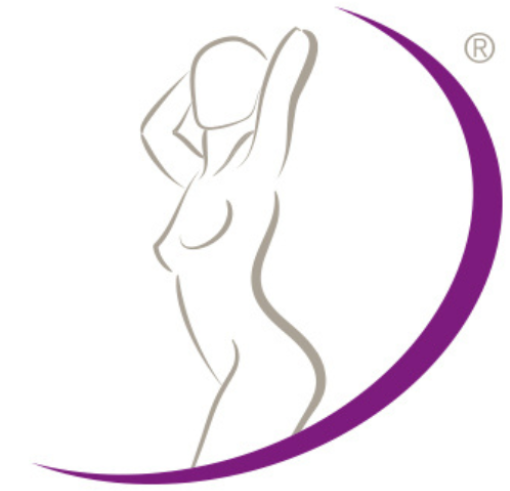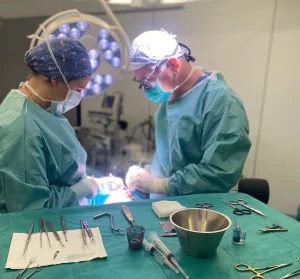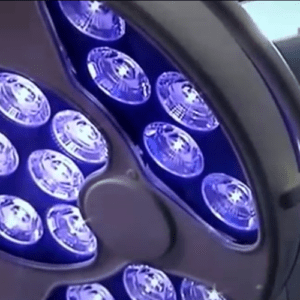- Confide in us
- Certified plastic surgeon
- 25 years of experience
- Quality over quantity
- Reliable aftercare
- Confide in us
- Certified plastic surgeon
- 25 years of experience
- Quality over quantity
- Reliable aftercare
What is a tummy tuck?
A tummy tuck, also known as “abdominoplasty” is a surgical procedure in which:
- Excess fat is removed.
- Excess skin, including any stretch marks, is removed.
- Stretched abdominal muscles are tightened.
The result is a firmer and smoother abdominal profile with enhanced contours.

Dr. Marc Nelissen
Plastic Surgeon
- We welcome you with:
- Certified Plastic Surgeon, 25 years of experience
- Dedicated team, paramedics and anesthesist
- Extensive consultation, guidance and postop care
- Warm and personal approach
- Safe high-tech operating theatre
- Pain-free and quick recovery (no drains)
- General anesthesia in day clinic (home the same day)
- Clear prices
- Good reviews and satisfaction
- Easily accessible and free parking
Facts about tummy tuck
What you definitely need to know about tummy tuck surgery:
- From € 3500
- Procedure of 2-3 hours
- General anesthesia (anesthesiologist)
- Day admission - no drains
- 1-4 weeks recovery
- horizontal in the pubic area + small scar around the belly button
Why or when should you have an abdominoplasty done?
A tummy tuck can be performed for various reasons, such as:
- Persistent fat rolls: If you, even with a normal weight and sufficient exercise, still have unsightly fat rolls on your stomach, also known as “Michelin bands“
- After pregnancy: For women who find it difficult to get rid of the “belly” after pregnancy. This is why a tummy tuck is often performed as part of a “mommy makeover“
When is it better to wait with a tummy tuck?
- Possible weight fluctuations in the future: If you are planning significant weight loss or a pregnancy in the near future, it is advisable to wait with the procedure until you have reached a stable weight.
- BMI (Body Mass Index) of more than 25: In this case, we recommend a prior diet and exercise to first lower your BMI to a level between 20 and 25.
- For smokers: if you cannot comply with the required smoking cessation.
What types of abdominoplasty?
What is the classic tummy tuck?
There are several techniques for a tummy tuck:
- Classic (“full”) tummy tuck: In this procedure, fat and skin are removed over the entire abdomen, both above and below the navel. This is done with a horizontal incision in the pubic area and a small incision around the navel, the so-called “anchor-scar“. This technique is applied to patients with open abdominal muscles and excess skin (stretch marks) and fat above and below the navel. This is the most commonly used technique by Plastic Surgeon Dr. Nelissen.
- Mini (“partial”) tummy tuck: In this procedure, only fat and skin are removed below the navel. This method does not involve an incision around the navel. This technique is suitable only for patients with a smaller amount of excess skin and fat in the lower abdomen and if the abdominal muscles are not open. This technique is used only in exceptional cases and is less suitable for extensive corrections.
- “Fleur-de-Lis” tummy tuck: This is a more extensive tummy tuck with a T-shaped incision, both horizontal and vertical. This technique is usually performed on “massive weight” (obesity) patients (bariatric surgery).
- Reverse tummy tuck: This is a rarely used technique where the incision is placed at the top of the abdomen instead of the usual horizontal incision at the bottom. It is often combined with other procedures such as a breast lift.
How does an abdominoplasty (tummy tuck) proceed?
STEP 1: THE INCISIONS
We make a horizontal incision in the bikini line just above the pubic area and below the navel. It is important to realize that there will be a scar, even though this scar will be well hidden in the underwear. The shape and length of this incision are determined by the amount of excess skin.
In a classic tummy tuck, an additional small circular incision is made around the navel.
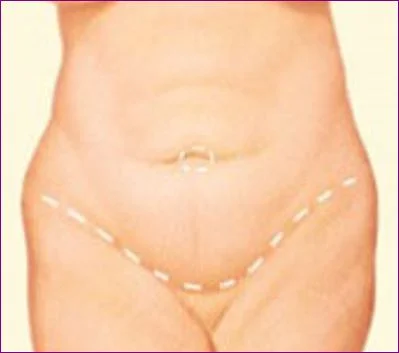
STEP 2: RECOVERY OF STRETCHED ABDOMINAL MUSCLES
Next, the skin and fat layers are loosened up to the stretched abdominal muscles (“diastasis”). These muscles are then pulled together, resulting in a flatter, firmer abdomen and a slimmer waist. In a classic abdominoplasty, a new belly button opening is also created.
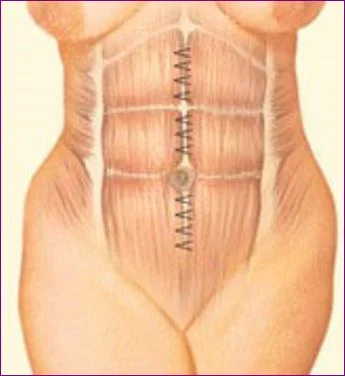
STEP 3: REMOVAL OF EXCESS SKIN AND FAT
After tightening the abdominal muscles, excess skin and fat are carefully removed.
STEP 4: STITCHING IN DIFFERENT LAYERS WITH DISSOLVABLE THREADS
When closing the wound, Dr. Nelissen uses a special technique (Baroudi technique) in which the stitching is done in multiple layers, distributing the tension on the scar evenly. He uses dissolvable sutures, which dissolve on their own and do not need to be removed after the procedure.
STEP 5: NO DRAINS
An important advantage of our approach is that we do not need to use drains, which makes recovery significantly more comfortable for the patient.
Traditionally, and still in many places, abdominal corrections have been performed with drains. These tubes are stitched into the wound to temporarily (for the first few days) drain blood and tissue fluid.
Thanks to more modern techniques, such as the Baroudi technique with “quilting sutures” (stitches that securely attach the skin to the underlying tissue) and the use of “gentle tissue handling” (careful handling of tissue and minimizing bleeding), the placement of drains has become unnecessary. Plastic surgeon Dr. Nelissen applies these innovative methods in all abdominoplasties, resulting in a smoother, more comfortable, and less burdensome recovery for the patient.
STEP 6: SUPPORT BANDAGE
Finally, we apply a support bandage to aid in the healing process (more on this in “recovery after abdominal surgery“).
3D animation video of a tummy tuck
Be sure to watch this 3D animation video, developed by the American Society for Plastic Surgeons.
Are you afraid of the scar from a tummy tuck?
We often hear from patients that they are initially hesitant about an abdominoplasty for the following reasons:
- Recovery time: However, we see many patients who can resume their normal lives very quickly, and even return to work after just a few days. This is a result of the techniques used, allowing for faster and pain-free recovery.
- Fear of scars: It is true that the scar does need time (around 6 months to 1 year) to fade, but we already see very nice scars after just 6 weeks (see before-and-after photos of the abdominoplasty). Below is a photo of the scars after 3 months, showing that the healing process can deliver beautiful results in a relatively short amount of time.
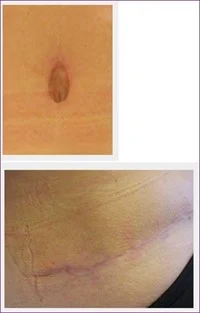
How much does a tummy tuck cost?
The price of a tummy tuck starts from € 3500. After your consultation, you will receive your personal all-inclusive quote. Click here to see the detailed price of the tummy tuck, including everything that is included in our price.
Before and after photos of tummy tuck
Click here to view the before-and-after photos of tummy tuck with real patient results. During the consultation, we can show you more examples (which we will select based on your needs).
FAQ - Frequently Asked Questions about Abdominoplasty
How long do I need to recover from an abdominoplasty?
As with any surgery, the recovery process of an abdominoplasty varies from person to person. From our experience, it is evident that there is a period of relative immobility during the first 4 days.
After this 4-day period, the support bandage is replaced by a compression garment. From that moment on, daily activities can gradually be resumed, depending on how the patient feels. This differs for everyone. Some patients immediately go for walks with their dog, resume their work as independent nurses, or return to their own hair salon.
However, it is crucial that the aftercare instructions are followed carefully to ensure optimal recovery.
To monitor healing properly, various follow-up appointments are scheduled, including one day after surgery, in week 1 and week 2, after 3 months, and ideally also after 6 months and 1 year, or as often as needed. All follow-up appointments are included in the treatment price. Dr. Nelissen remains available to address and resolve any concerns his patients may have during their recovery.
Tummy tuck or liposuction?
Many people initially think of liposuction when it comes to treating belly fat rolls.
However, we believe that a tummy tuck often offers more possibilities and results than liposuction. A tummy tuck can provide a larger and more defined “before and after” result because:
- Larger amounts of fat can be removed: A tummy tuck can remove more fat than liposuction is capable of.
- Excess skin is removed: Unlike liposuction, which only removes fat, a tummy tuck can also remove excess skin, which is essential for a tighter result.
- Abdominal muscles are restored: In a tummy tuck, open or weakened abdominal muscles (diastasis) are brought together and strengthened. This acts like a kind of corset, resulting in a slimmer waist and improved posture. This result can never be achieved with liposuction alone.
Can I get a tummy tuck after a C-section?
Yes, you can still undergo a tummy tuck, even after a C-section.
In many cases, the C-section scar is actually a reason why patients choose to have a tummy tuck. After a C-section, the wound is only stitched up.
Once you have returned to your normal weight after the C-section, a tummy tuck can do the following:
- Tighten your abdominal muscles.
- Remove excess skin.
- Create a slimmer waistline.
- Correct the C-section scar.
What happens to my belly button during a tummy tuck?
During an abdominoplasty, your belly button remains intact:
- Belly button is cut around: The belly button is detached from the surrounding skin but remains attached to the underlying abdominal muscles.
- Incision in the bikini line: A horizontal incision is made low on the abdomen, usually in the bikini line, to remove excess skin and fat.
- Tightening of the abdominal muscles: The stretched abdominal muscles are tightened to create a flatter stomach and a slimmer waistline.
- Skin tightening: The skin above the belly button is pulled downward.
- New opening for the belly button: A new opening is made in the skin where the belly button is reattached.
After the surgery, you will have two scars: one around your belly button and one low in the bikini fold.
Satisfied tummy tuck experiences

Tummy tuck
January 2024 (Marina)
Had very pleasant conversations, listened well to my wishes. From the pre-surgery consultation to the day of the surgery and now three months later, all contact has been great. A wonderful team that makes you feel at ease! I definitely recommend this clinic to others!

Tummy tuck
2023 (Carmela)
I had an abdominoplasty. The surgery went well, the result is even more beautiful than I had dared to hope, and the pain was very manageable. Everyone at the clinic is incredibly kind and helpful. The aftercare in the following weeks was also perfect. In short, I can definitely recommend this clinic.
Your tummy tuck
-step by step-
A tummy tuck is a safe procedure, performed as an outpatient under general anesthesia (by our regular anesthesiologist) in our high-end operating room.
Click on the link below to learn everything about all the steps of your treatment, from your first consultation to follow-up visits, including FAQ – frequently asked general questions.
Where will my surgery take place?
When can I return home?
A tummy tuck is performed at the Global Care Clinic:
- in one of our modern operating rooms
- under general anesthesia administered by our permanent anesthetist
- as a day procedure: you can go home the same day.
Take a look at our operating room here.

Make your appointment
Easily book your appointment by giving us a call, sending an email, or using our contact or callback form.
For consultations and anti-wrinkle injections, you can also book an appointment online to see available time slots directly.
Perhaps you were looking for information about these treatments:


